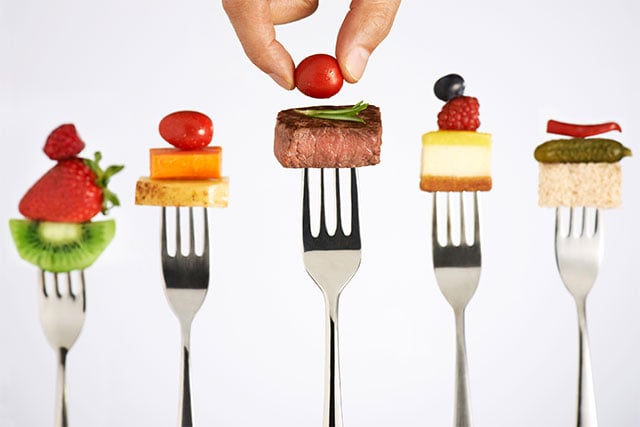
When most of us hear the word “diet,” we picture a structured list of dos and don’ts. Eat this, never that. But, what if “that” happens to be your favorite food? You’ll probably keep eating it, with an added helping of guilt for not sticking to your diet. Fortunately, when it comes to senior nutrition, there is a better way to acheive healthier eating.
A liberalized diet gives seniors the support they need to succeed. We asked Mark Holmes, national director of culinary operations for The Goodman Group, to tell us more.
PUTTING CHOICE INTO PLAY
Meal options at senior living communities managed by The Goodman Group have one thing in common: individuality. This means seniors are not on a rigid diet but are given the tools to make their own informed dietary choices. Not we know best, but you know yourself best. One facet of teaching healthy dietary choices is related to portion sizes. Here are a couple of examples, based on common senior health conditions:
Diabetes
Instead of talking about a diabetic diet, communities managed by The Goodman Group reframe the conversation to carbohydrate control. This includes discussion around insulin type and quantity administered. Too much carbohydrate can increase your insulin requirement, so the choice is yours. You can allow yourself a half portion of some carb-heavy food you love and accompany it with larger servings of veggies. Or, rather than saying no to all desserts, you can have a half portion every now and then.
Liberalized diets help mitigate the compulsion to stash candy or cookies as it allows for satisfying one's sweet tooth without going overboard.
Kidney disease
If you have chronic kidney disease and are on dialysis, we will ask what you like to eat. Potassium-rich foods such as sweet potatoes are a good choice for healthy kidneys, but when kidneys start to fail, too much potassium becomes dangerous. With a liberalized diet, we might suggest you try one serving of fries (or tomatoes, or an orange) once a week and see how that affects your test results. The community's culinary team will work with your healthcare provider to make adjustments as necessary, so you can safely enjoy the foods you love.
Whatever your health status, it comes down to eating habits. Again using our kidney example, if you eat pizza with lots of tomato sauce three times a week, that’s too much potassium. Instead, if you switch to white sauce or barbeque sauce with chicken, you can still indulge in pizza with less risk.
Eating Habits and Abilities
In some ways, eating habits depend on your ability to eat as well as your food preferences. For instance, in our managed memory care neighborhoods, meals focus on finger foods because it’s often difficult for memory care residents to manage utensils. Every meal is personalized to meet the dining and nutritional needs of those living in our managed communities.
The managed communities are able to offer liberalized diets because of the close support and conversation residents and team members have with medical providers. This is a key component in creating individualized and balanced meal plans.


